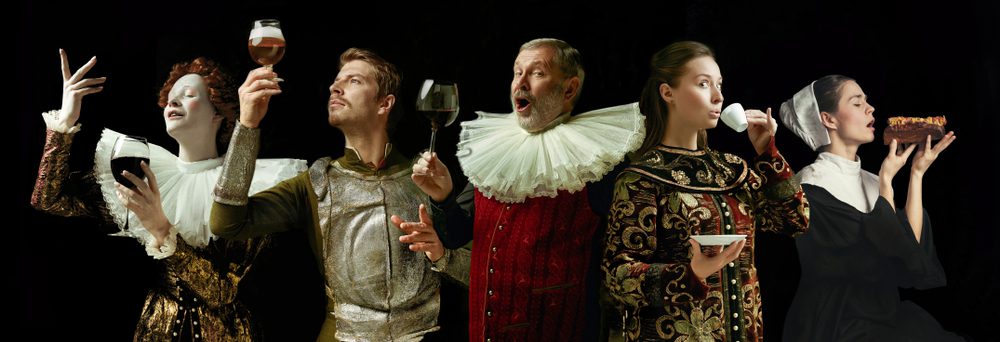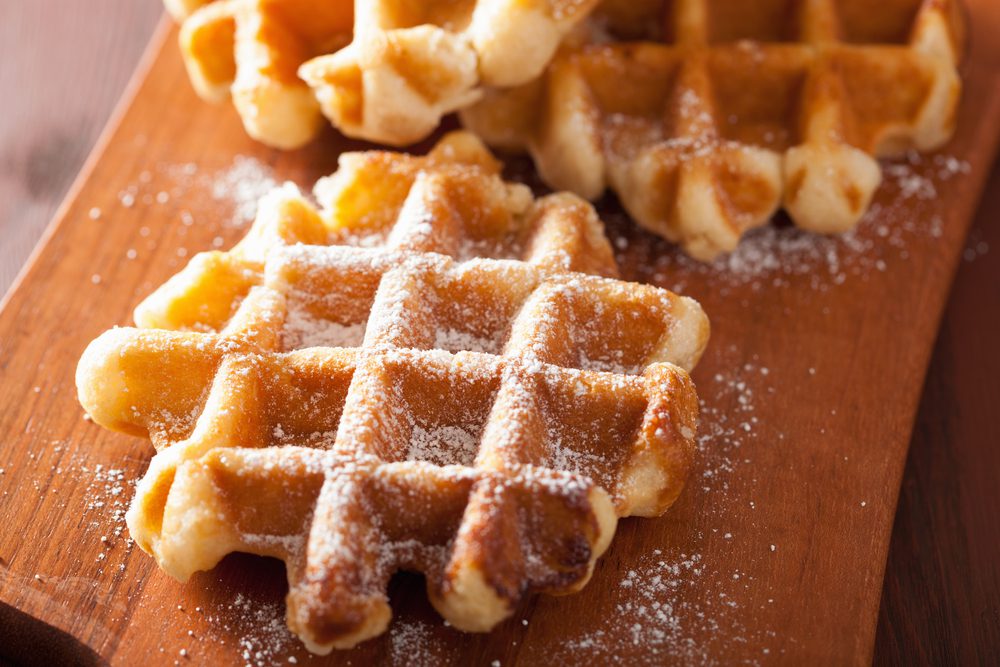Can you imagine a knight eating a Big Mac and a couple of donuts? Well, this is not far from the truth; in fact, eating a meat pie and funnel cake was their go-to choice for “junk food.” Although they served mostly meat and vegetables, especially to the wealthy, medieval junk food was mostly consumed by travelers and the poor.
The world’s love affair with junk food is a tale as old as time. In fact, a lot of what would become the fast food industry began in early medieval Europe, where people satisfied their cravings with some interesting cuisine. And it wasn’t always tasty! Let’s take a look at what “junk food” was like in the middle ages. Are you ready?

1. Meat pies were the best “junk food”
Pies were so accessible to everybody during medieval times, and believe it or not, they were sold as junk food on the streets of London. But you had to be careful not to eat rotting meat because, according to a 13th-century “survey,” a lot of people were selling sick pigs for dinner. And instead of burning the animals, they were cooking and reheating the meat.
Undercooked meat was another major issue of the century! After a while, chefs developed a terrible reputation for using spoiled or contaminated meat in their pies. One saying asserts that while the devil brings the cooks, God sends the meat.
2. Bread bowls
During the middle ages, London was a center of trade and commerce, but the poverty around the whole continent was pretty high. So for many Londoners, cooking at home wasn’t really convenient or even possible. Why? Because cooking equipment and ingredients weren’t exactly affordable. Let’s not mention the fuel! On top of that, the poor people were packed into tenement housing that often didn’t have any furnishings, let alone a hearth. That explains why so many people went to cook shops for takeout. And this is how “junk” food was invented. It must be something tasty and filling but also convenient enough to be eaten while walking.
Believe it or not, bread was one of the most common foods during medieval times, but a lot of households didn’t have their own grain, so they had to buy it from bakers. And while selling ready-made bread was great, all the bakers could make something even more interesting for their customers.
For example, you could bring your own meat and give it to them to wrap in the dough and bake. Delicious, right? And they didn’t have to charge you more than a penny if you brought the meat. Together with bread stuffed with meat, another tasty food from medieval times was the bread bowl. These were called “trenchers,” and they were the absolute go-to option for junk food for a lot of people. They served as edible bowls for soups and stews, and it was a lot more affordable than eating at restaurants with dishes and such.
3. Soft pretzels
But bread bowls weren’t the only tasty carb-loading option available! In addition to being a staple of state fairs and aimless mall wandering, soft pretzels were also incredibly popular during the whole medieval period.
This amazingly tasty “junk” food had only three ingredients: water, flour, and salt. And in less than 30 minutes, you could make almost 50 pretzels to bake. Furthermore, the Catholic Church approved of this delicious snack or junk food, whatever you want to call it, and everyone was very happy to eat them.
Because meat was avoided because it could have been rotten, pretzels easily took its place. They were handed to kids who were praying while others distributed them to the poor. Can you believe that these tiny things were considered symbols of luck and prosperity? And what’s not to love about chowing down on a freshly baked pretzel?

4. Who needs junk food when we have alcohol?
Europeans of the era enjoyed drinking, and prohibition did not alter that. They were expected to refrain from eating meat during Lent and other fasting days. Since many people in medieval Europe felt fish did not constitute meat because it reproduced asexually, they ate fish in its place. Others started drinking.
While it provided temporary solace from abstaining, the practice of staying thoroughly soaked through lent didn’t sit well with the Church, which was mainly against alcohol in large quantities. In fact, they had some “strong” words for those who had this bad habit, mostly because a lot of people drank a lot of alcoholic beverages only during Lent.
5. Mock egg
Another junk food from medieval times that was eaten during Lent was the mock egg, which was usually consumed with a glass of alcohol near it. This dish was invented as a meat replacement. Even today, the recipe is fairly simple to prepare. Take a few empty egg shells and fill them with a mixture of almond milk, jelly, and crunchy almonds. Then dye it yellow (with food coloring) and choke it down with a mug of tasty beer.
6. Everybody had a sweet tooth!
Sugar is basically one of those things we take for granted today or try to limit as much as possible. But for all the knights in shining armor and even for regular people, sugar was pretty hard to come by; in fact, it was considered a luxury. So rather than regular candy bars, people would flock to the bakeries for pastries sweetened with honey.
An old recipe from the 14th century consisted of apples, flour, saffron, and honey. Gingerbread, another popular food for satisfying the peasantry’s sweet tooth, also used honey instead of sugar, incorporating pepper, ginger, and cloves, giving it a robust and rich flavor. However, by the 16th century, all Europeans had developed a taste for sugared meat. Because sugar became more popular and affordable compared to previous centuries, a lot of dishes began to feature sugar, including syrups and crystallized fruits.
And among other spices, sugar became one of the best ones for seasoning the meat. Weird, right? In fact, sugar was widely used for all types of meat. The desire to consume a lot of sugar transformed diets for centuries. After all, this is the foundation of modern junk food.
7. Funnel cake made its first appearance as a “Junk Food” par excellence
Medieval Europeans adored cakes, fritters, and custards when it came to sweets. In actuality, medieval times were when funnel cakes originally appeared. A medieval recipe book claims that the English adored fritters of all varieties. Some recipes called for figs, apples, and almonds as components for fritters.
The first funnel cakes were known as “cryspes,” which are simply fried cakes with sugar on top. Due to the less readily available ingredients than nowadays, Europeans had to get inventive with their fritters, even frying up sweetened cottage cheese and calling it a “milk fritter.”

8. Waffles
Although you may think that waffles were invented by Americans, they existed even before the medieval era, but they turned this dish into junk food. This recipe dates back to the Ancient Greeks, who were also sugar lovers and wanted to start baking cakes. Their cakes had a similar shape to today’s waffles, and the only difference is that they weren’t as sweet as they are now.
The European palate was expanded by the Crusades, and the Crusaders brought back new ingredients for the waffle wafer batter, such as cinnamon, honey, and cream. The rectangular, grid-patterned plates were created in the 15th century by inventive Dutchmen.
Late medieval Europeans had the option of fast food by purchasing a “wafel” on the street. An English cookbook gave the word “waffle” a second “f” in the 18th century.
And if you liked this article about junk food, be sure to check out 7 Surprising Foods American Presidents Served at US Dinners.






One Response
Good post. I learn something totally new and challenging on blogs I stumbleupon on a daily basis. Its always useful to read content from other authors and practice something from their websites.